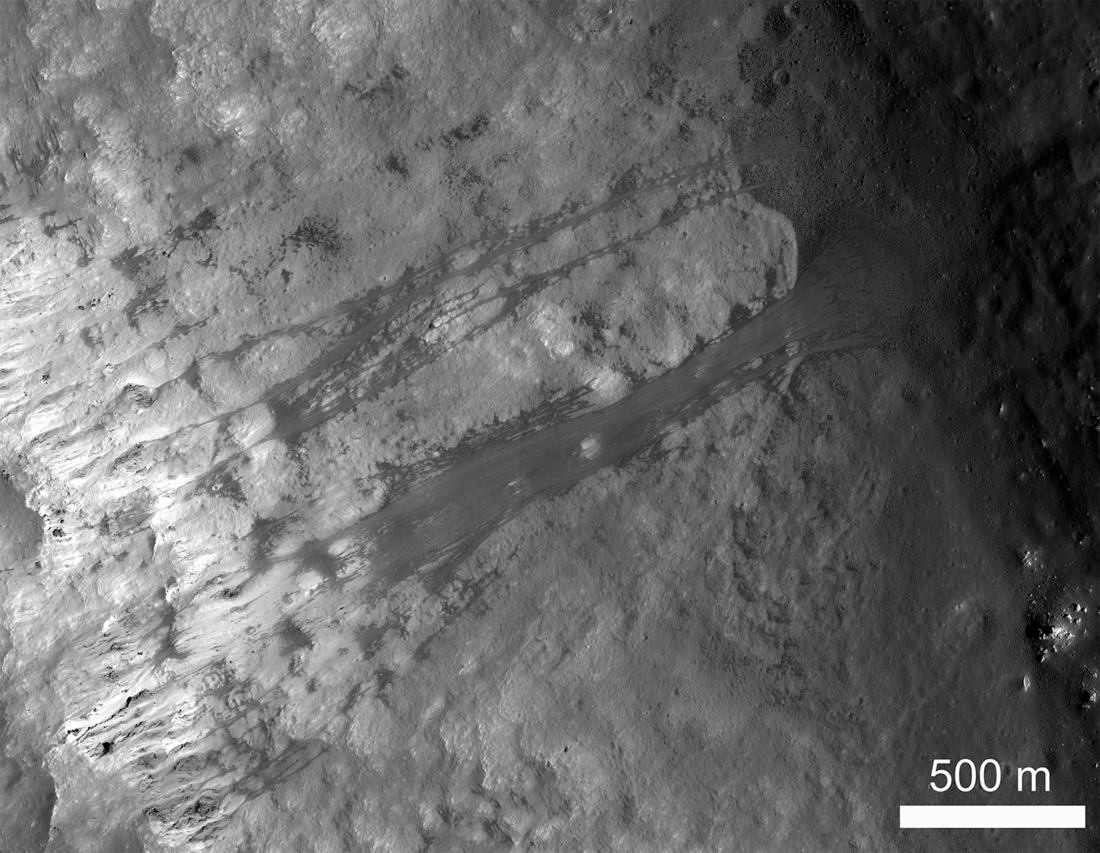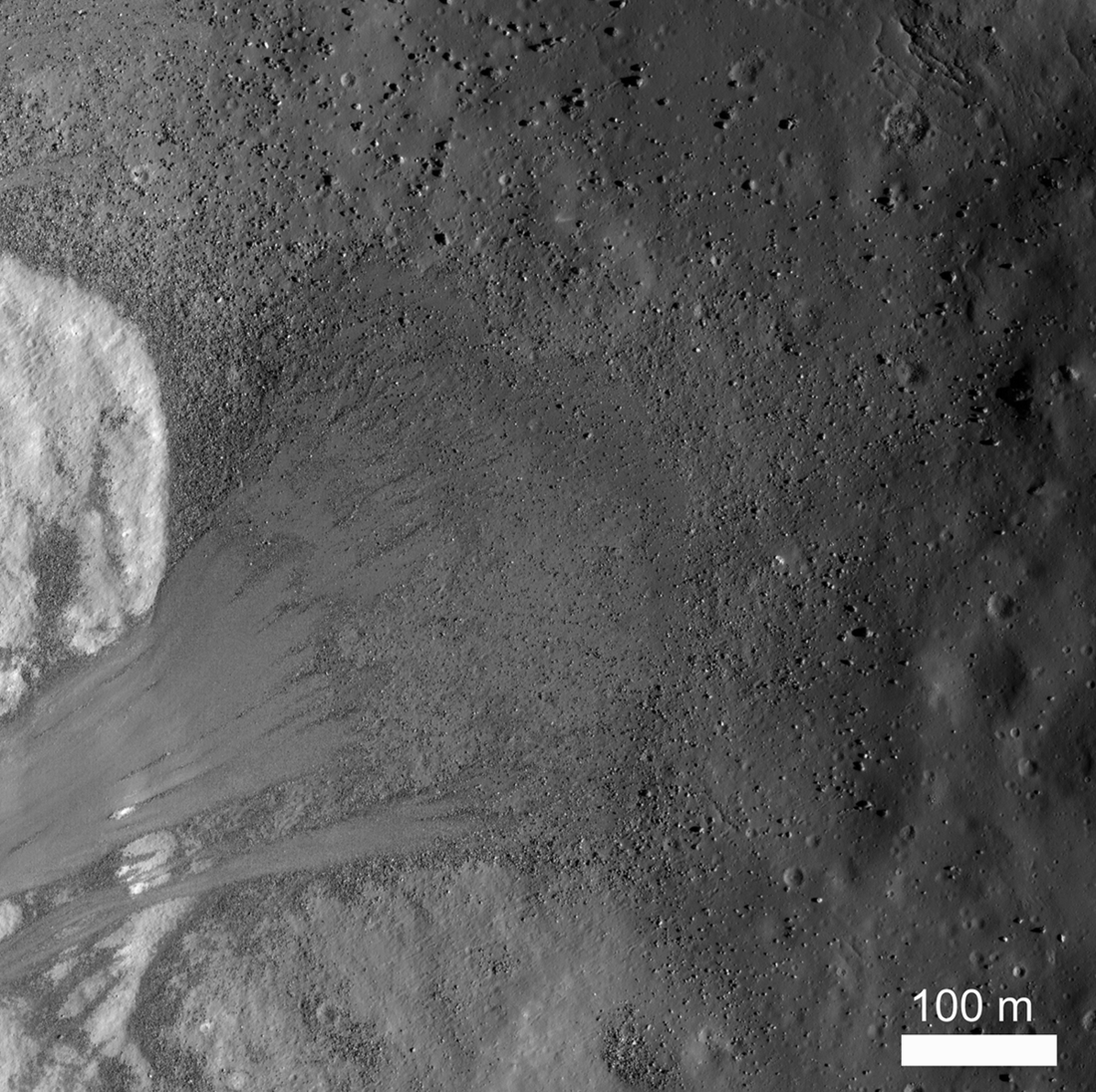
The walls of impact craters slowly retreat backwards, widening the crater, as the crater ages due to wall material moving downslope onto the floor. Movement can be a grain by grain creep wherein material slowly creeps down the wall over time, or it can occur as a catastrophic event in which a large amount of debris cascades down the slope.
The walls of Kepler crater (30 kilometer diameter) exhibit numerous landslides. In this example, a landslide of dark material begins about 100 meters below the rim from a narrow box canyon. The box canyon is about 50 meters wide and 300 meters long. Overall, the slide is extends some 2300 meters (from the end of the canyon to its base). The base of the slide is on a fault block that lies some 1800 meters below the rim. The wall slope is about 33 degrees.

This slide is actually composed of a series of narrow landslides 20-30 meters wide. Along most of the slope, the individual slides overrun each other forming a band of debris up to about 180 meters wide. At the base of the slope, the individual slides can be recognized as they move apart forming a fan of material. A few individual isolated slides also occur adjacent to the main mass. The overlapping nature of these small slides indicate that the overall feature may have formed over a period of time, rather than all at once.
Most of the particles in the slide are unresolved in the image (less than a meter). However, at the margins and toes of the slides, larger blocks several meters in diameter are common; scattered boulders up to about 10 meters diameter are found at the base of the slide.

Explore the full NAC pair mosaic of these magnificent deposits, M114206456LR [NASA/GSFC/Arizona State University].
Related Feature Images
Published by Jeff Plescia on 9 October 2020